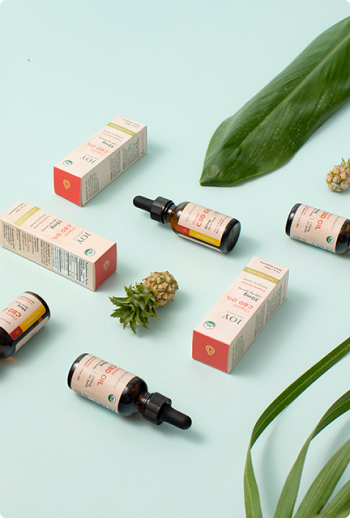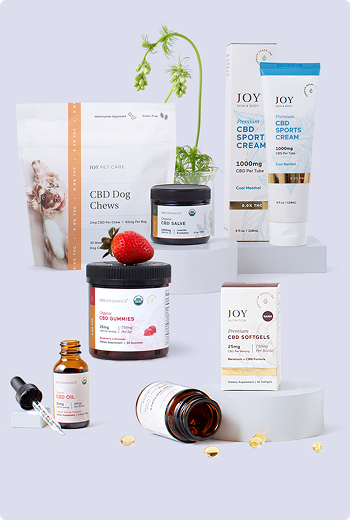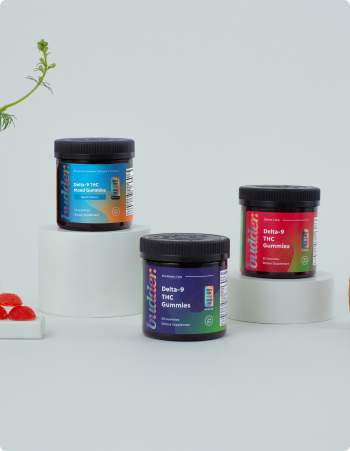While we are huge proponents of hemp-based care with CBD oil, there's more to the cannabis plant than maintaining optimal wellness. This crop is both hardy and sustainable, and also makes sturdy textiles. That's why the next wave of the cannabis movement is evidencing itself in hemp fabric. So, what is hemp fabric and how can you incorporate this textile into your everyday life? Let's take a closer look at hemp fabric.
What Is Hemp Fabric?
As you might imagine, hemp fabric is material that is made out of hemp and that can be used the same way you would use other textiles. The fibers that comprise its stalk are very strong, yet also pliable. These attributes make hemp fiber an excellent resource for making long-lasting items that will withstand adverse weather conditions.
Some common uses for hemp fabric include:
- Bags
- Clothing
- Mattresses
- Paper
- Ropes
- Shoes
- Tents
As this extensive list above shows, there is a wide range of hemp fiber.. A lot of these uses are rooted in ancient history. Next, we will take a look at the long, rich history of hemp.
History of Hemp Fabric
Hemp is only just now having its shining moment on the textile stage, but humans’ history with the plant goes back centuries. As a matter of fact, many ancient texts praised hemp for its many benefits. That's why the Hindu scriptures, The Vedas, noted hemp one of the five essential plants.

Our ancestors used the flowers to make tonics and topicals. They were sustainable long before sustainability was talked about in the mainstream. They used as many parts off the crop as they could, including the seemingly inedible and useless stalks. The hemp fibers were used to create ropes for their ships and as fabric to create clothing to keep warm and shoes to protect their feet.
Believe it or not, Christopher Columbus's voyage ships were rigged with hemp. Once they landed in the “New World,” hemp became a staple crop. In Jamestown, it was a law that landowners must cultivate hemp on their property. A number of settlements even accepted hemp fabric as a form of tender. By the 1920s, up to 80% of clothing was made using hemp fabric.
Our dependency on hemp continued until the early 1900s. However, hemp products became outlawed with the prohibition of cannabis. Instead of using hemp fabric for clothing, people began to use cotton. Shoes started to be made from polyester and leather. Ropes became twine.
Hemp was phased out of our everyday lives. Nevertheless, this sustainable choice rose again. What was once old is new again–– hemp is now the way of the future.
What Are the Benefits of Hemp Fabric?
With the rising popularity of CBD products, manufacturers are going through more hemp than ever before. Hemp is one of our oldest, greatest friends. Current generations are beginning to understand why our ancestors loved this highly sustainable plant so much.
Hemp is Easy to Grow
There's a reason why hemp came along with our ancestors as they continued to move. It can survive in a variety of climates. Early records of hemp were found in present-day India and China–– places that are known for their warmer climates. Even though hemp can grow through many weather patterns, it does indeed thrive the most in temperate environments (such as India and China).
However, hemp is strong enough to endure a steep dip in temperature. This is why hemp fabric can be traced back to colder regions like Russia. In fact, Russia used to be one of the largest exporters of hemp to the “New World.”
Hemp Fabric Yields a Lot of Fiber

Not only is hemp fabric better for the environment, but it's also better for your wallet. Like a gift that keeps on giving, you get a lot more fiber out hemp stalks than you do with other popular textile choices.
For instance, hemp fiber yields:
- 250% more fiber than cotton
- 600% more fiber than flax
This means that you get more hemp fabric per acre of growth. This sort of math makes not only environmental sense but financial sense as well.
Hemp Enriches Soil
Throughout the agriculture industry, farmers are fans of companion crops. Companion crops are plants that make it more advantageous for other plants to grow. Hemp is one of the best companion crops out there.
Hemp benefits the . This sustainable crop has shown to improve the microbial composition of the soil it grows in. In other words, hemp makes the soil better for the next batch of hemp crops or other plants the farmer decides to cultivate.
Hemp Gets Softer with Time
The fact that hemp fabric is comfortable is one of the best reasons to wear it. Just like your favorite pair of jeans, hemp fabric gets softer with time. You'll love your hemp fabric when you first wear it and that appreciation will only grow stronger throughout the years!
How is Hemp Fabric Made?
Hemp fabric is derived from long strands of fiber. These fibers make up the stalks that offer both structural support and nutrients for the flowers to grow. To break up these fibers, they must go through a process known as retting.
Retting is when you soak the plant in a liquid–– think about when a volleyball net or hammock is left in the rain the fibers loosen. The same goes for hemp fabric. By retting the stalks, manufacturers are able to get the fibers away from one another and into individual strands.

From there, the strands can be woven together. This repurposes the fibers into textiles. You can manipulate the material to create hemp fabric that you can use to design clothing, shoes and bags. While hemp is a sustainable plant, unfortunately some of the practices used to make hemp fabric are not. Let's explain the differences in hemp fabric practices so you can make an educated decision about your purchases.
What Are Poor Hemp Fabric Practices?
It can be both taxing and time consuming to weave together hemp fibers. While machines can help expedite the process, some companies look to cut as many corners as possible. In these instances, chemical solvents may be used. These practices allow manufacturers to make more products at a cheaper cost, but these inorganic compounds likely have an adverse effect on our ozone layer.
Furthermore, some companies try to improve the aesthetic of the hemp fabric by dying it. Sadly, many of these dyes are made with inorganic ingredients. It is in your best interest to make sure that you are purchasing hemp fabric that hasn't been treated. Aim to purchase from companies that use natural sources for color, like turmeric or beet juice.
Who Sells Ethical Hemp Fabric?
While opting for hemp fabric can go a long way in helping the environment, we can also lose the hemp battle to corporate greed. If we want companies to maintain ethical practices, we must vote with our dollars. When people continue to support businesses that cut corners, it only opens the door for others to do the same. Set a precedent by choosing companies that sell ethical hemp fabric.
Some brands that sell ethical hemp fabric include:
When you see hemp fabric in a store, be sure to research the product before you buy it. Some companies may grow their hemp with pesticides. These practices are not only harmful to the environment, but for the consumer as well.
Is Hemp Fabric the Future?
The world's individuals are becoming more conscious of their spending habits every day. They're waking up to learn how these decisions impact the environment as a whole. That's why so many people are turning to hemp products.
Thanks to CBD oil, hemp seems to be the future for maintaining wellness. Additionally, the CBD oil industry may have just flipped the fashion industry on its head. Sustainability is the way of the future and hemp fabric is one of the most sustainable fabric options. If you want to see hemp fabric flourish, it is important to make sure that you’re a product that is responsibly sourced.
Check into brands to ensure they are following all-natural practices and that no synthetic dyes or chemicals were used during the process. By holding companies to a high standard of practice, you will help make sure hemp fabric becomes the fabric of the future.
Thanks for reading! To show how much we appreciate you, we’re going to give you 16% off your next order. Just use code READER16 at checkout!























Join in on the Conversation
Your email address will not be published. Once your comment is approved, it will be published.